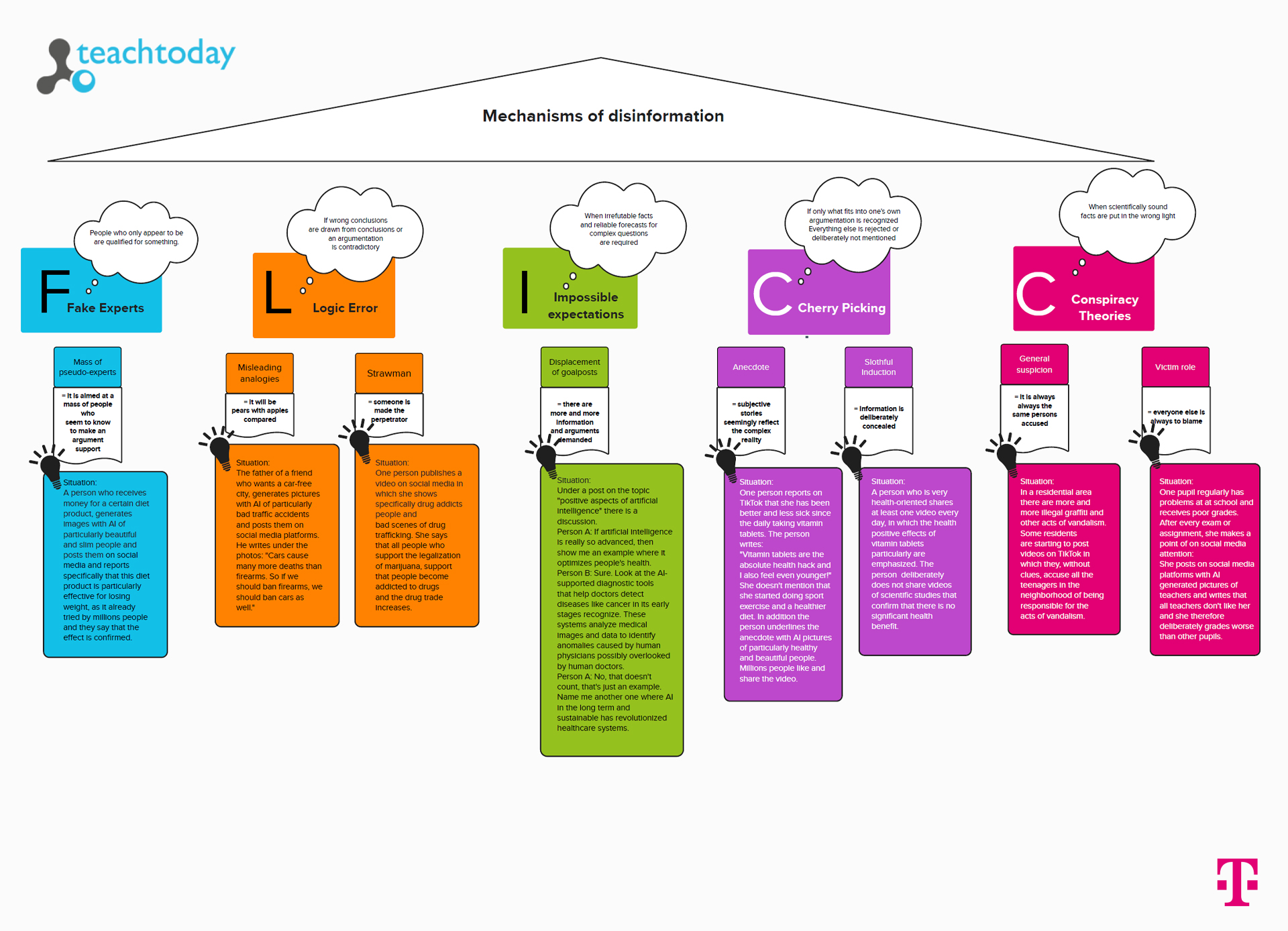This high figure shows how many different ways there are to share and be confronted with disinformation. This makes it all the more important to recognize disinformation. Cognitive scientists have developed the PLURV model to help identify disinformation strategies.
Based on the FLICC model, the infographic shows excerpts that explain and exemplify how the mechanisms of disinformation work. It can be downloaded free of charge via the download icon.
Disinformation is deliberately disseminated false or misleading information with the aim of causing damage and spreading uncertainty. The terms misinformation and fake news are often used as synonyms for disinformation, although misinformation can also be "accidentally" false information.
There are many reasons for the spread of disinformation. It can be spread out of hatred, to harm others or to gain financial advantage. The aim of political disinformation is to influence political opinions. Freedom of expression and education is a cornerstone of democracy. It is therefore important to expose manipulative strategies in this area. When disinformation influences and changes political opinion, it can be dangerous for democracy.
Under the following link you can open the infographic in the Mural Board and use it for group discussions.
Further information on the topic of disinformation can be found below under "Read more in the dossier". We also recommend our project idea entitled "Disinformation using the example of framing", which you can carry out with 12 to 16-year-olds.
 2024: Important elections are coming up worldwide, but the spread of disinformation via digital channels is increasing. Strengthening media literacy is crucial in times of fake news and populist movements to protect democracy and support young people.
Disinformation in times of AI
2024: Important elections are coming up worldwide, but the spread of disinformation via digital channels is increasing. Strengthening media literacy is crucial in times of fake news and populist movements to protect democracy and support young people.
Disinformation in times of AI
 Deutsche Telekom impressively demonstrates the destructive power of disinformation and calls on us to double check the content we share. At a time when misinformation is spreading faster than ever before, Deutsche Telekom is joining forces with its partner organizations to raise awareness of this pressing social issue.
No Hate Speech - No Chance for Misinformation
Deutsche Telekom impressively demonstrates the destructive power of disinformation and calls on us to double check the content we share. At a time when misinformation is spreading faster than ever before, Deutsche Telekom is joining forces with its partner organizations to raise awareness of this pressing social issue.
No Hate Speech - No Chance for Misinformation
Fake News – Strategies of Disinformation
Interactive learning module: Disinformation

